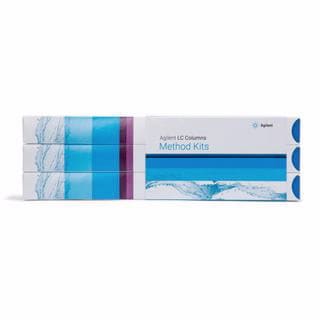
(U)HPLC Column Method Development Kits
InfinityLab Poroshell 120 and ZORBAX HPLC and UHPLC method development kits simplify method development. The HPLC and UHPLC columns compiled in these kits were carefully selected to reflect tasks in your everyday method development, such as screening solvents or orthogonal stationary phases for analytical HPLC method development. Agilent columns are manufactured to the industry’s tightest quality control specifications for reliable, reproducible performance, making them ideal for HPLC and UHPLC method development.

